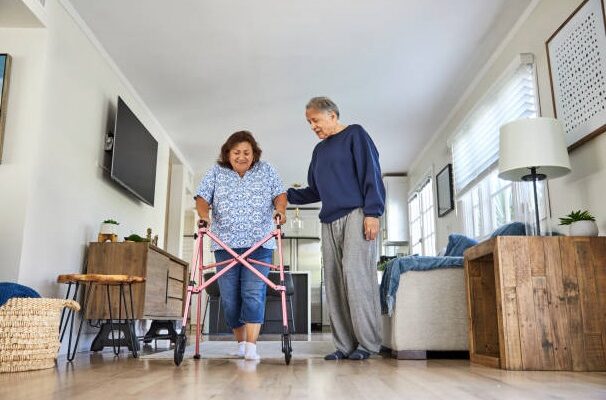As people get older, they may experience physical limitations. In some cases, disabilities and injuries can also introduce difficulty with mobility, impacting daily life. Challenges in performing everyday tasks further lead to feelings of frustration and reliance on others. One common challenge is standing up from a seated position, which can often be a struggle for individuals.
The introduction of such tools to assist with transitions has proven crucial in providing support and promoting independence for those in need. This article delves into the importance of these aids and how they greatly enhance the quality of life for individuals.
Exploring Transition Aid Tools
Transition aids are tools created to help people transition smoothly and comfortably from sitting to standing positions while minimizing strain. They offer stability and support when transitioning from sitting to standing positions and empower individuals to carry out tasks more comfortably and confidently. Keep reading to dive into the various types and advantages of transition aids.
Varieties of Transition Assistance
Various types of transition assistance are tailored to meet users’ requirements and preferences. One example is grab bars, which provide a grip for individuals needing support while getting up. Portable lifting seats are designed to help by lifting people into a standing posture. For individuals in need of assistance during transitions, sit-to-stand lifts offer support throughout the process. These different aids highlight the importance of choosing the one based on individual mobility constraints.
Advantages of Utilizing Transition Supports
Transition tools benefit individuals by increasing their autonomy and improving safety measures. When these tools lessen the effort needed to stand up, the chances of falls and associated injuries are reduced. They also empower users, including children, to uphold their self-respect and independence resulting in an approach towards daily activities. Furthermore, care providers experience advantages since transition tools reduce the strain on them, enabling them to offer more efficient assistance.
Boosting Self-Reliance and Confidence
Having a sense of independence is key in shaping one’s self-esteem at any age. Support devices can assist old and young individuals in taking charge of their mobility and boosting their confidence and self-sufficiency. Making transitions easier with the help of these tools for movement support devices encourages people to participate in activities that they may have found intimidating. This boost in confidence can result in engagement and better mental health overall, especially when caring for seniors.
Selecting the Appropriate Transition Assistance
Choosing the tool to help with transitions requires considering a range of factors. It’s important to evaluate the needs of the person using it and consider their capabilities and surroundings when deciding. Seeking advice from healthcare experts is an idea as they can offer insights and suggestions that are personalized to each situation. Furthermore, trying out tools before settling on one helps ensure that the chosen aid provides the required assistance and convenience.
Integrating Support Tools into Everyday Activities
Incorporating transition aids into schedules necessitates consideration and planning ahead of time. Placing grab bars can significantly improve their usability and impact. Utilizing these aids consistently in areas like the bathroom or common areas guarantees that individuals get assistance as required. Engaging in usage assists people in getting used to these tools and boosts their self-assurance and autonomy.
Relief For Caregivers
Individuals who assist others with transition aids are key in offering support and guidance. The application of these tools in this context testifies to their importance in providing improved care and motivation for those in need of assistance and their caregivers. This further enhances the care quality offered to those requiring help with movements.
Advancements in Transitional Assistance
Technological progress has brought about the creation of transition tools that offer a variety of features like remote controls and customizable settings to meet different needs effectively. These cutting-edge upgrades focus on improving user comfort and ease during transitions for an experience. Keeping up to date with developments guarantees users access to the best solutions.
In Summary
Transition aids enhance the lives of individuals dealing with mobility issues by providing them with safety and independence while boosting their confidence levels significantly. The availability of types of aids allows users to make decisions that cater to their specific needs. As technology advances, such devices are expected to become more efficient, resulting in a better quality of life for users. Welcoming the use of transition aids marks a move towards a future that’s both independent and rewarding.
If you want morе еxciting contеnt visit. Globallyviz.com














Comments